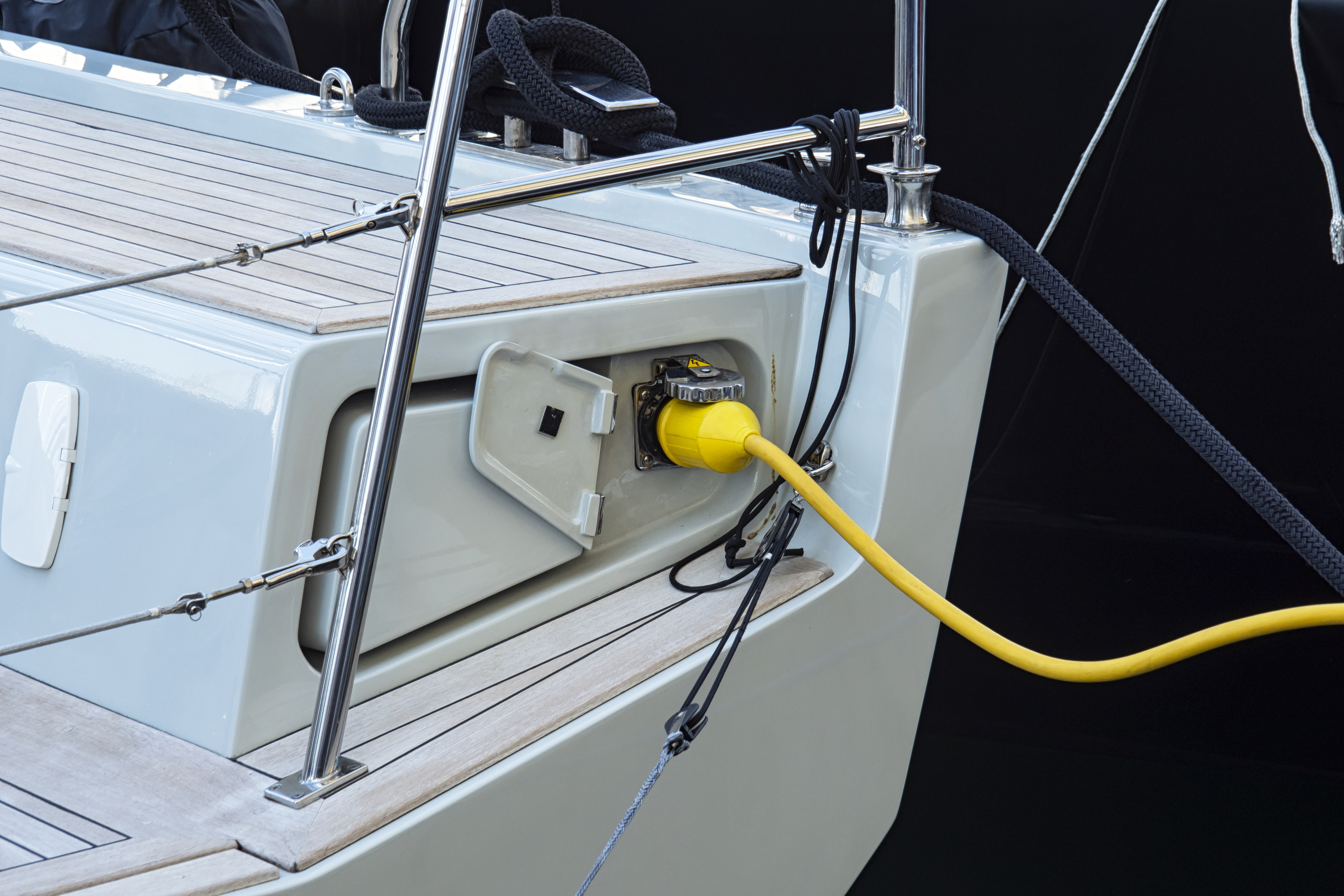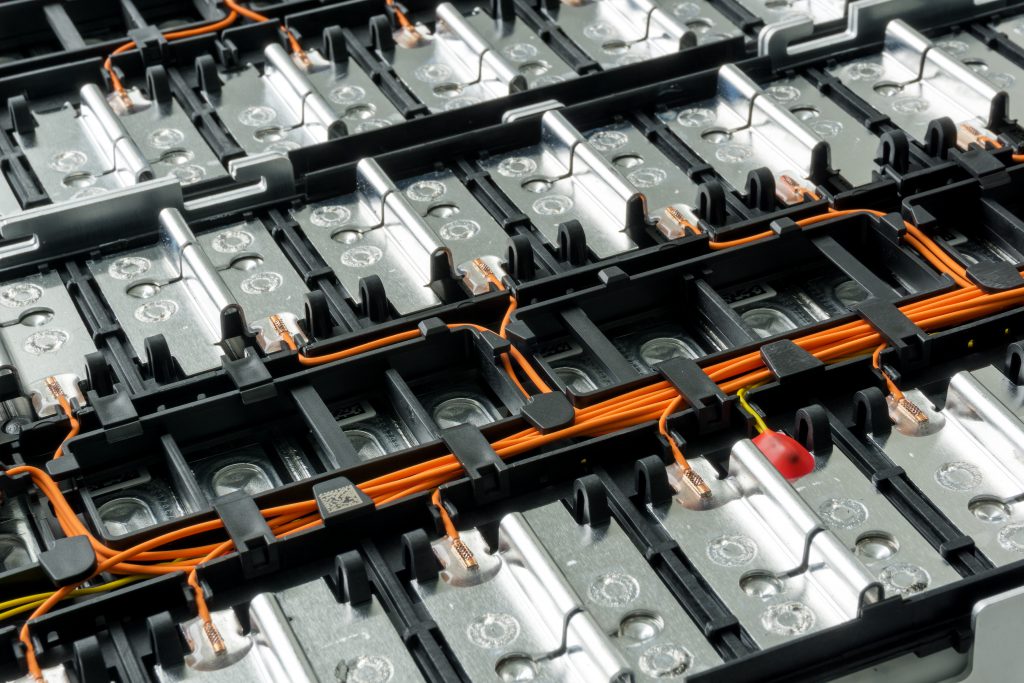Battery Basics for your Boat
December 18th, 2021 by team

by B.J. Porter (Contributing Editor)
In our recent post Why Are My Lights Dim, we covered the basics of electricity and power consumption. But one reason you may have dim lights and a low battery is that your battery may be no good. A quality rechargeable battery can give you many years of service, but they don’t last forever.
It’s easy enough to look at that dying battery and just track down a replacement for by brand and part number. But is that the best solution? Did that battery die because it was old, or because it wasn’t the best type of battery for the job?
Changing the type of battery isnt’t simple – there are several battery chemistries and construction choices. They’ve all got advantages and disadvantages, and you need to understand a little about batteries to make an informed choice.
How Batteries Work
Electricity is a flow of electrons. Like water in a river, you can tap that flow do work. The batteries in everything from boats to flashlights use chemical reactions to release the electrons to make electricity flow.
A battery cell has two poles (or electrodes) in a conductive medium. In the lead-acid batteries used in most boat and car batteries, plates of lead and lead dioxide sit in a bath of sulfuric acid.
When a circuit is complete, electrons flow through from the negative pole to the positive. Lead is converted to lead sulfate. Charging the battery reverses the chemical reaction, and the lead sulfate breaks back down at the electrodes.
When a battery loses its ability to hold a charge, it’s usually because the constant cycling of these chemical reactions has led to deterioration of the plates. Overcharging batteries with too much voltage can boil off electrolyte and release dangerous gases while damaging the battery.
The speed limit of this chemical reaction determines how much current the battery can produce. High current applications use thinner plates for fast reactions and lots of cranking power. Deep cycle batteries deliver lower currents over many hours or days with thick, heavy plates for slower reaction speed.
Lead-Acid Battery Types

Most boat batteries are still lead-acid, but not all batteries are equally suited to a task. The basic wet cell battery has been improved with new technology to give better life and performance in the demanding marine environment.
Different batteries have different requirements for charge voltages and profiles, so if you are switching between types, you will have to check the settings for all chargers and alternators.
Lead-acid batteries are heavy. Quality batteries use a lot of lead, and a bad installation can set a boat out of trim.
Another limitation of lead-acid batteries that over-discharging can shorten their lives or damage them. Most lead-acid batteries should not discharge to less than 50% full.
Finally, as lead-acid batteries get full, they accept less and less charge current. Imagine filling a kiddie pool, but you put the pool on top of the hose you’re filling with. As the pool gets more and more full, the weight on the hose slows the flow to a trickle. Getting the batteries from 90% to 100% full can almost as long as getting to 90% did.
If you plug your boat into a dock every Sunday, this doesn’t affect you unless you’re on a long vacation. For boat charging from generators at anchor, this means lots of run time or incomplete charging.
Flooded Batteries
The flooded or “wet cell” batteries literally have liquid acid sloshing around lead plates in the case. These are the traditional car batteries you had to add water to and maintain. They are by far the least expensive batteries, and there are deep cycle flooded batteries which will suit any task electrically. But there are downsides when you’re working in a marine environment.
Pros:
- Most economical
Cons:
- Flooded batteries need maintenance and must be topped with water. For one battery in a car, this is no big deal. Multiple batteries on a boat will be more work.
- They must be installed in only one orientation.
- Sulfuric acid forms chlorine gas if you mix it with seawater.
Absorbed Glass Mat (AGM)
The battery case in an AMG is packed with fiberglass matting, and acid is absorbed into the mat. These are also called as “acid-starved” because of the low acid, or as a VRLA (valve-regulated lead-acid) battery because the case is sealed except for a valve to handle outgassing from overcharging.
AGM batteries are expensive, but have a longer life and are more durable in a boat and maintenance free. Because there is no loose liquid, AGM batteries can be installed in any convenient orientation, and there is no risk of spilling acid into seawater. They are very resistant to vibration and shock, and have the highest charge/discharge rates..
Gel batteries
Gel batteries are another type of VRLA. The electrolyte is bound into a gel with silica dust or other material, fixing it in place and preventing spills. Like AGMs, they don’t need water or maintenance. They are expensive, and more sensitive to high charge voltages and overcharging.
Carbon Foam and other developments
Over the last few years, new construction and materials have evolved into better batteries. Carbon foam batteries have similar performance characteristics to AGMs, for example, but should last for three or four times the number of charge cycles.
With any newer battery technology, do careful research to ensure that the improved batteries really perform as advertised.
Lithium (LiFePO~4~)

The lithium batteries you may consider for a boat are quite different from what is in your phone or tablet (Lithium polymer), and there’s lots of misinformation about them. Most assumptions boaters have about them are based on issues with cell phone batteries.
LFP Advantages
Lithium iron phosphate, or “LFP” batteries have a much higher energy density than and lead-acid batteries. For the same weight in LFP batteries, you can often install two to three times the storage capacity of lead-acid.
Other key difference with LiFePO~4~ is you can use 80% of their capacity, and there is no slowdown in charging as the batteries near full. A LFP bank can accept maximum charge right until they are full, so a complete recharge is much faster. And they maintain their voltage well as they discharge, so power delivery remains constant.
With 70-80% usable power for less weight, a lithium battery bank can easily double or triple a boat’s effective battery capacity.
Disadvantages
There are reasons everyone isn’t rushing right out into LFP batteries, and they are not right for every boat. The weight savings make them popular with racers and blue water cruisers love their performance. But they can be quite expensive, and most weekend sailors don’t need that much battery life.
LFP batteries are also very sensitive to over charging and over discharging, so much so that they need protective systems to prevent their accidental destruction. The charge profiles and voltages are different, so many older chargers can not charge them, requiring the owner to replace not only the batteries but the chargers, too.
The installation is more complex, and you need to watch out for “drop in” LFP batteries because they may not have all the over and under current and voltage protection they should have. Drop-ins are not inherently bad, but you need to know what you are installing.
The fire risks of lithium are often overstated because of confusion with Lithium Polymer batteries. There is a risk, but fire is a risk with any battery installation.
What Batteries are Right for You?
The full answer depends on your boat, how you use it, and what your priorities and budget are. The needs of a weekend cruiser who spends a couple of weeks on vacation differ from those of a full-time liveaboard. Similarly, a short course, round-the-buoys racer will have different priorities from someone doing offshore racing.
If you’re like most boaters, a quality AGM house and start battery will cover most of your needs. If you’re on a tight budget and don’t mind the extra work and care, you can use flooded cells. And blue water cruisers are falling in love with their lithium batteries.
- Posted in Blog, Boat Care, Boating Tips, Cruising, iNavX, Navigation, Reviews, Sailing, Sailing Tips
- No Comments
Comments are closed.

